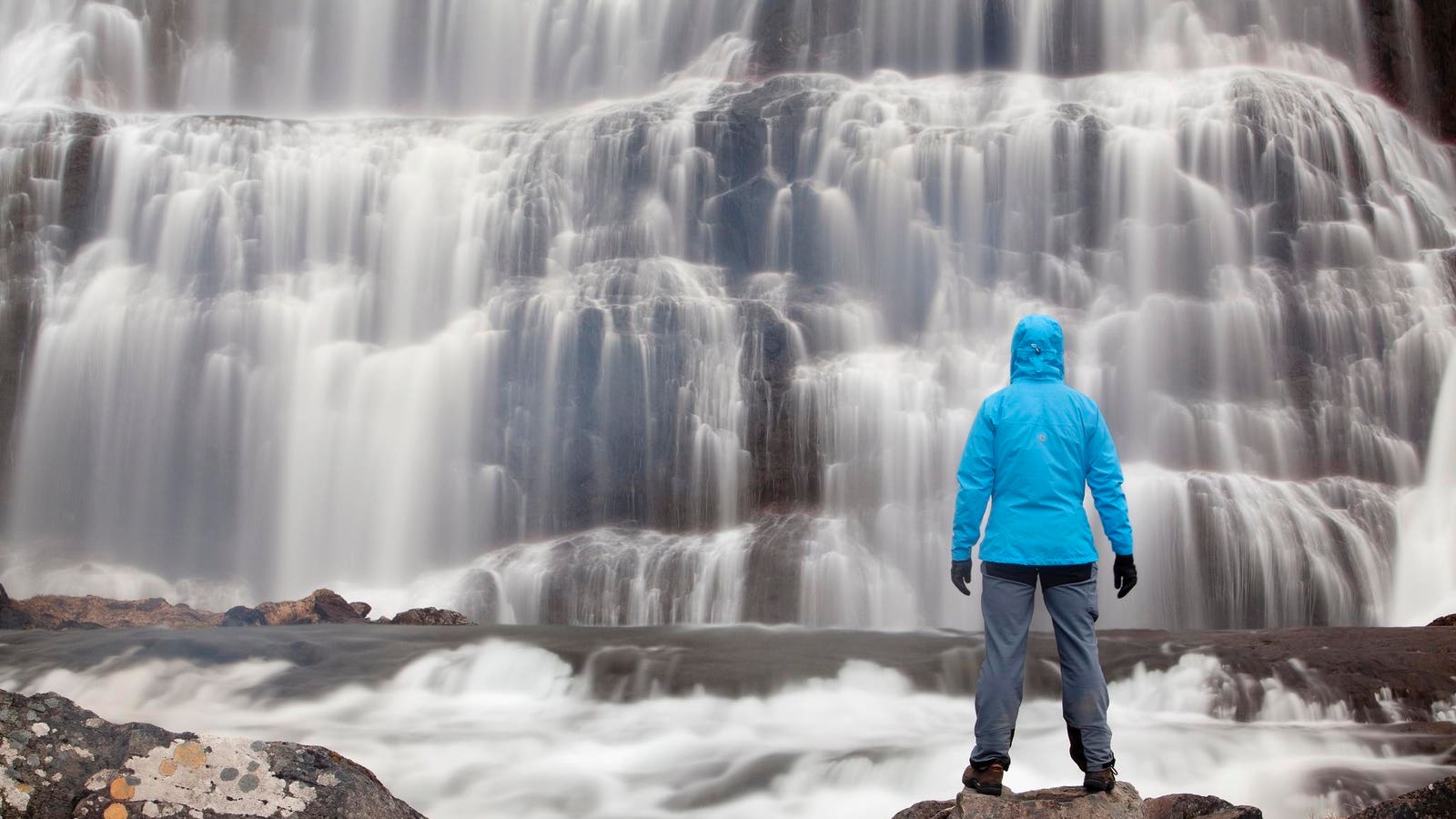The Dynjandi waterfall in the Westfjords region is one of many highlights of Iceland far beyond the Golden Circle.
getty
There’s a reason Iceland’s Golden Circle is so famous. Just a short drive from Reykjavik, the Golden Circle is advertised as an ideal route for first-time visitors or anyone short on time.
The trio of Thingvellir National Park, the thundering Gullfoss waterfall and the Geysir geothermal area form a compact, dramatic showcase of Iceland’s natural power. But popularity has its downside.
In 2024, Iceland welcomed almost 2.3 million international visitors. While that number might not seem excessive at first glance, it’s striking when set against the country’s population of just 380,000.
One of the biggest overtourism issues facing Iceland is that almost 99% of those visitors arrive at Keflavik International Airport, with many heading straight for the island’s most popular sightseeing route.
Beyond The Golden Circle
A big proportion of visitiors head straight for the Golden Circle, a route that attracts coachloads of tourists throughout the year. During peak season, queues form at car parks and trails fill with chatter and selfie sticks, putting the wild sense of isolation that Iceland promises out of reach.
Yet beyond this heavily trafficked loop, there are other landscapes just as spectacular, and possibly even more rewarding because of their solitude.
Peaceful villages of the Eastfjords sit between steep mountains and calm bays, while the waters of the north are rich with whales and seabirds.
Elsewhere, the Reykjanes Peninsula is shaped by recent volcanic activity, while the highlands remain raw and untamed, offering gravel roads, steaming vents, glacial rivers and vast empty plateaus that feel far removed from the modern world.
The North: Quiet Harbors, Cultural Traditions
Despite an expanded airport and new direct flights, the north of Iceland remains one of the country’s best-kept secrets.
From the harbor town of Husavik, travelers can join tours to spot humpback whales and puffins in near silence, far from the crowds of the south. Many of the boats here use electric motors, making for a peaceful and sustainable experience on the water.
Husavik is a wonderful base in Northern Iceland, whether for whale watching or simply enjoying the long summer nights.
getty
Nearby Akureyri is Iceland’s biggest city outside the Reykjavik capital region, but it feels more like a well-kept village. It makes an excellent base for day trips into the surrounding fjords or inland toward Goðafoss, one of Iceland’s most photogenic waterfalls.
Although knitting is a cherished tradition throughout Iceland, it holds a special place in the north. Each year, the region hosts a beloved knitting festival that brings together yarn lovers from across the country for workshops and a lively marketplace.
History buffs should detour to Sauðarkrokur to explore Iceland’s medieval sagas at the immersive 1238: The Battle of Iceland exhibit.
East: Remote Beauty A World Away
Reaching the Eastfjords takes time, but those who make the journey are rewarded with raw landscapes and a slower pace of life. Tiny towns like Seyðisfjorður feel like they’ve been plucked from a postcard, complete with colorful wooden houses and a curious local art scene.
The region is ideal for hikers and nature lovers, with dramatic coastal paths, waterfalls, and far fewer tourists than the south coast. The drive itself is part of the appeal with grazing reindeer sharing the winding roads with the handful of vehicles.
If eastern Iceland appeals, you might consider arriving the traditional way: by sea. The Smyril Line ferry travels from Denmark, stopping in the Faroe Islands before reaching Seyðisfjörður.
This approach offers a slower, more reflective beginning to your Icelandic journey, far removed from the bustle of Keflavík Airport. While the voyage can be long and the seas occasionally rough, it rewards patient travellers with a strong sense of place, as Iceland looms out of the wild Atlantic.
West: Iceland in Miniature
The Snæfellsnes Peninsula packs black sand beaches, lava fields, waterfalls, and the glacier-capped Snaefellsjokull volcano into a single day’s drive. It’s more accessible than the Westfjords or Eastfjords but still far quieter than the Golden Circle.
Svodufoss waterfall and Snaefellsjokull glacier are popular attractions in Iceland, yet without the mass crowds of the Golden Circle.
getty
This region is rich in folklore and literary history. Snaefellsjokull inspired Journey to the Center of the Earth, and many villages in the area are closely tied to Iceland’s sagas. For a cultural detour, stop by the Settlement Center in Borgarnes to learn about the country’s early days and the stories that shaped its identity.
Farther north, the Westfjords offer some of Iceland’s most remote and dramatic scenery. Towering cliffs, winding roads, and little in the way of infrastructure give this region a wild, end-of-the-world feel. One of the highlights is Dynjandi, a majestic tiered waterfall that cascades down a mountainside.
Despite the isolation, the town of Isafjorður provides modern comforts, including hotels, restaurants, and cultural venues.
South: Much More Than The Golden Circle
You don’t need to abandon the south entirely, just shift your focus. Instead of the packed paths of Gullfoss or Geysir, drive east of Vik to the glacier lagoon at Jokulsarlon or explore the serpentine Fjaðrargljufur canyon.
Even along the Ring Road, it’s possible to escape the crowd with a little planning. For something even more offbeat, take a detour to the Katla Geopark for ice cave adventures in near solitude.
The southern region, as with the rest of Iceland, has far more to offer than the Golden Circle, especially for travelers willing to look beyond the obvious.
MORE FROM FORBESForbesHow To Plan A Volcano-Themed Trip To IcelandBy David NikelForbesHow To See The Best Of Iceland On A BudgetBy David NikelForbesIceland Travel: City Breaks In The Land Of Fire And IceBy David Nikel
